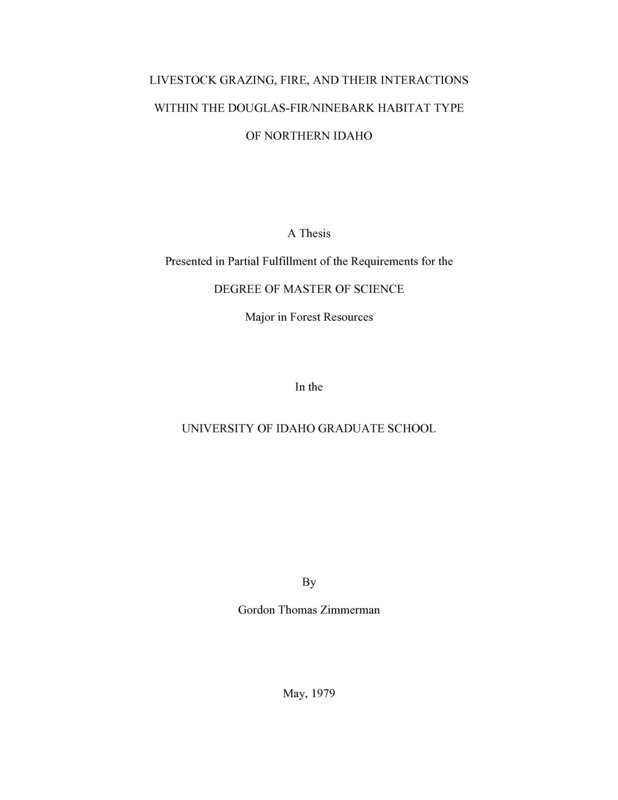PDF PREVIEW
Livestock Grazing, Fire, and Their Interactions Within the Douglas-fir/Ninebark Habitat Type of Northern Idaho Item Info
- Title:
- Livestock Grazing, Fire, and Their Interactions Within the Douglas-fir/Ninebark Habitat Type of Northern Idaho
- Creator:
- Zimmerman, Gordon Thomas
- Date Created:
- 1979-05
- Description:
- Available research clearly demonstrates that fire can have certain beneficial effects on some forested environments. Complete fire exclusion in many areas creates dangerous fuel accumulations which result in catastrophic fires, insect and disease buildup, range deterioration, changes in wildlife carrying capacity, and decreased watershed yield (Ahlgren 1974). Where fuels are permitted to accumulate, fires increase in severity and damage, and offer much greater resistance to control (Dodge 1972). For these reasons prescribed burning, the planned ignition of grass, shrubs, or forest fuels to achieve a desired objective, is recognized as a valuable land management practice. This practice is extremely useful in ponderosa pine (Pinus ponderosa) and Douglas-fir ecosystems to attain management objectives such as 1) reduction of fire hazards after logging, 2) exposure of mineral soil for seedbeds, 3) control of insects and diseases, 4) thinning of dense stands of saplings, 5) increased yield and quality of forage, 6) improvement of big game habitat, and 7) modification of species composition in different plant communities (Habeck and Mutch 1975).
- Document Type:
- Thesis
- Library Call Number:
- SD427.G8Z5
- Subjects:
- Douglas-fir pseudotsuga menziesii ninebark northern Idaho grazing livestock fire ecological interactions East Hatter Creek forest ecology
- UIEF Unit:
- East Hatter Creek
- Section:
- S1
- Township:
- T40N
- Range:
- R4W
- Location:
- UIEF; East Hatter Creek
- Latitude:
- 46.841245
- Longitude:
- -116.780864
- Publisher:
- Journal of Range Management
- Department:
- Department of Forest Resources
- Source:
- Journal of Range Management 37(2)
- Type:
- Text
- Format:
- application/pdf
Source
- Preferred Citation:
- "Livestock Grazing, Fire, and Their Interactions Within the Douglas-fir/Ninebark Habitat Type of Northern Idaho", UIEF Research Exchange, University of Idaho Library Digital Collections, https://www.lib.uidaho.edu/digital/uief/items/uief_0075.html
Rights
- Rights:
- In copyright, educational use permitted.
- Standardized Rights:
- http://rightsstatements.org/vocab/InC-EDU/1.0/

